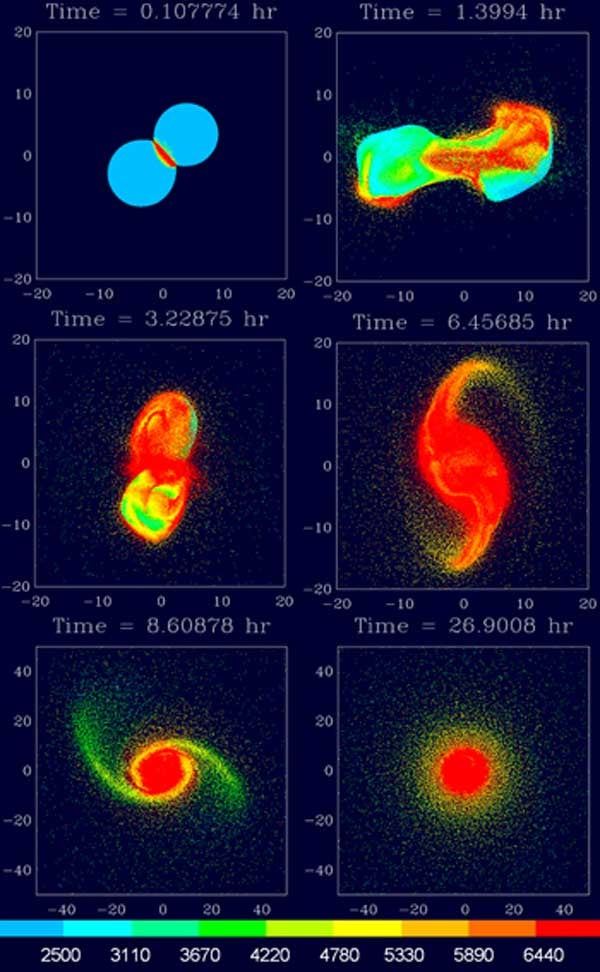In the giant impact scenario, the Moon forms from debris ejected into an Earth-orbiting disk by the collision of a smaller protoplanet with the early Earth. Earlier models found that most or much of the disk material would have originated from the Mars-sized impacting body, whose composition likely would have differed substantially from that of Earth.
The new models developed by Robin Canup from the SwRI Space Science and Engineering Division involve much larger impactors than those previously considered. In the new simulations, both the impactor and the target are of comparable mass, each containing about four to five times that of Mars. The near symmetry of the collision causes the disk’s composition to be extremely similar to that of the final planet’s mantle over a relatively broad range of impact angles and speeds, consistent with the Earth-Moon compositional similarities.
The new impacts produce an Earth that is rotating two to two and a half times faster than implied by the current angular momentum of the Earth-Moon system, which is contained in both Earth’s rotation and the Moon’s orbit. However, Matija Cuk from the SETI Institute in Mountain View, California, and Sarah Stewart from Harvard University in Cambridge, Massachusetts, show that a resonant interaction between the early Moon and the Sun — known as the evection resonance — could have decreased the angular momentum of the Earth-Moon system by this amount soon after the Moon-forming impact.
“By allowing for a much higher initial angular momentum for the Earth-Moon system, the Cuk-and-Stewart work allows for impacts that for the first time can directly produce an appropriately massive disk with a composition equal to that of the planet’s mantle,” said Canup.
In addition to the impacts identified in Canup’s paper, Cuk and Stewart show that impacts involving a much smaller, high-velocity impactor colliding into a target that is rotating very rapidly due to a prior impact can also produce a disk-planet system with similar compositions.
“The ultimate likelihood of each impact scenario will need to be assessed by improved models of terrestrial planet formation, as well as by a better understanding of the conditions required for the evection resonance mechanism,” said Canup.
Canup used smoothed-particle hydrodynamics (SPH) to simulate the colliding planetary objects using 300,000 discrete particles whose individual thermodynamic and gravitational interactions were tracked with time.










